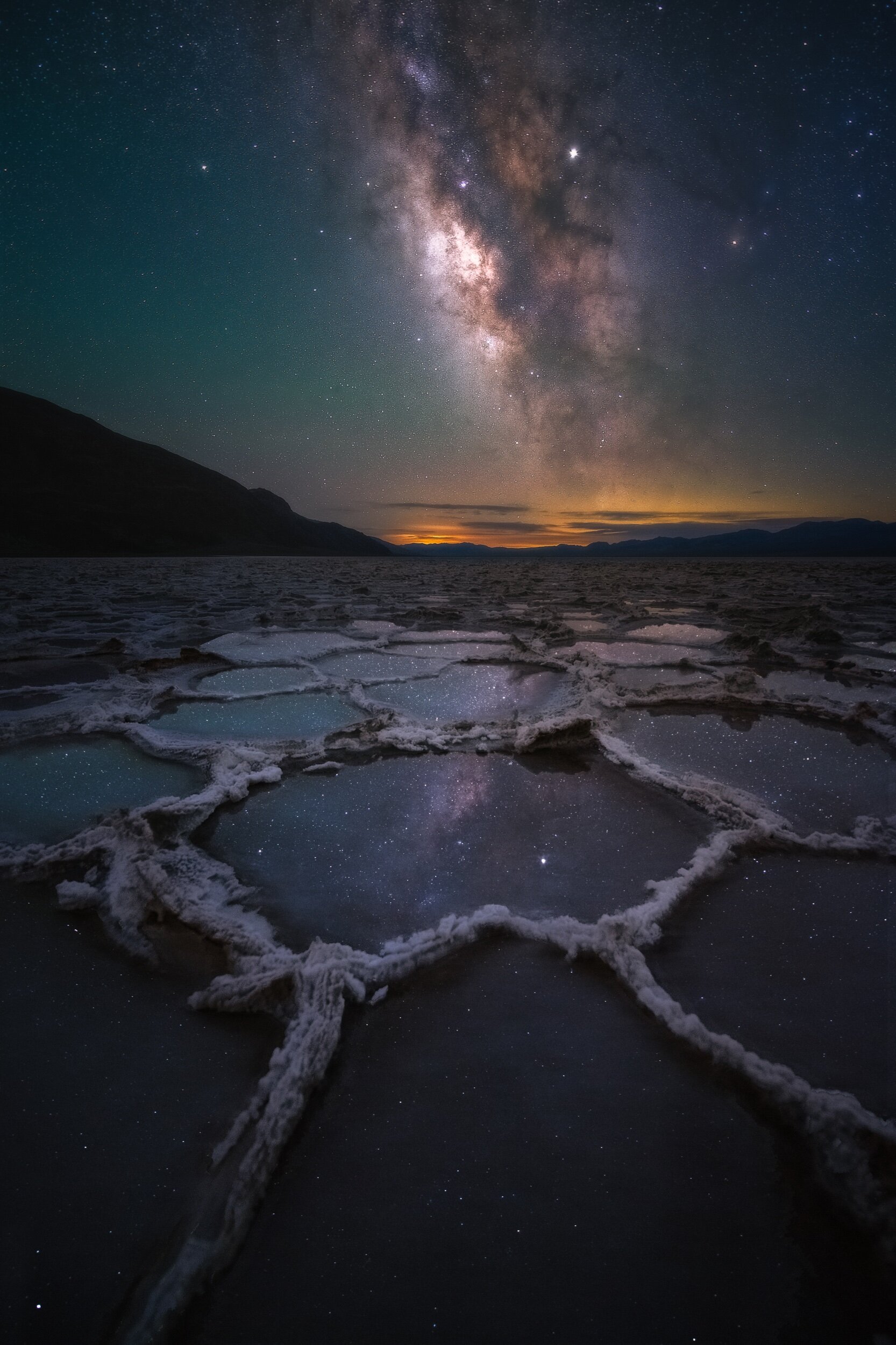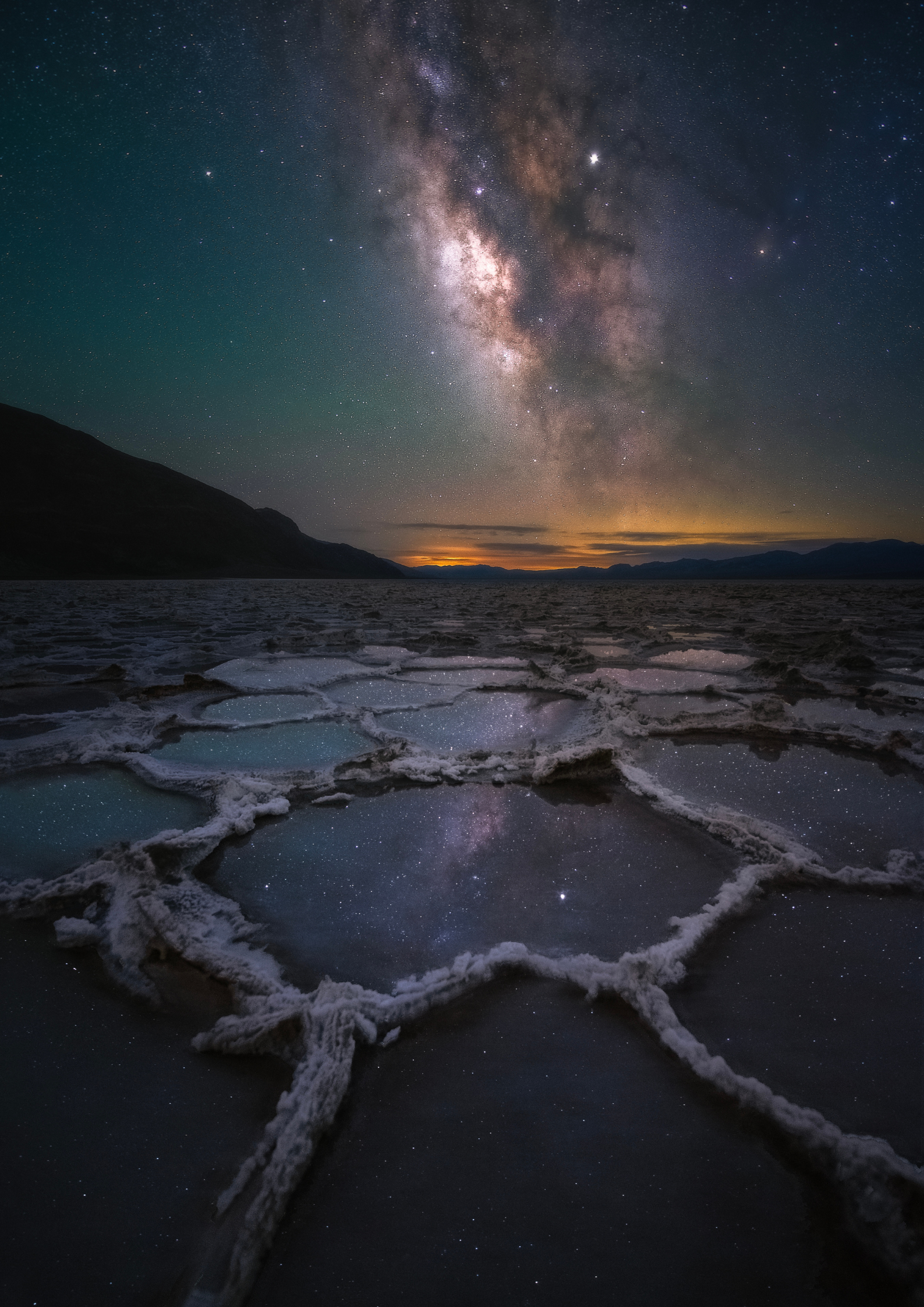5 Tips & Tricks for Shooting at Night
Everything is so much more difficult when you can’t see! Over the years, I’ve found some hacks to help save some time and frustration when shooting in the dark:
1. To help setup your shot in the dark - bump that ISO to 68,000 and set your shutter speed to 2 seconds instead of waiting 20-30 seconds to see what your composition looks like. You’ll end up saving your self a ton of time, hopefully allowing you to fit in another composition or two!
If you shoot with Sony, you have the ultimate hack! Sony‘s have an option that turns your back screen display basically into night vision, making night photography much easier.
2. Use Focus Peaking. Make sure Focus Peaking is turned on (usually located in the Setup Menu.) Switch your camera to manual focus, turn on the back screen display, zoom into a cluster of stars and slowly focus until more and more little red dots pop up on the screen.
3. When shooting stars, don’t use the brightest stars to focus, Focus on getting dimmer stars in focus.
4. LONG exposures. If you are not shooting stars, try a longer exposure time with a lower ISO (Unless your camera can shoot for longer than 30”, you’ll need an intervalometer). Next time you are out in an area with very little light, try these settings:
10 minutes, 800 ISO, F/2.8
20 minutes, 400 ISO, f/2.8
5. Shoot with a higher ISO. Most DSLR cameras today can easily handle up to 6400 ISO. With that said, don’t be afraid to go higher, you can always take multiple images and stack them to reduce the noise. Try these settings next time shooting the Milky Way:
14-24mm, 10-15”, 6400 ISO, F/2.8
(20 shots stacked - 6400 ISO, 15 seconds, f/2.8 - Nikon D850 + Nikon 14-24mm f/2.8)
(Pano - 10 shots stacked - 12800 ISO, 6 seconds, f/1.8, 85mm - Nikon D850 + Nikon 85mm f/1.8)
(20 shots stacked - 10000 ISO, 15 seconds, f/2.8, 14mm - Nikon D850 + Nikon 14-24mm f/2.8)
Don’t count out the crop sensors, either! I have never had any issues shooting Milky Way at 6400 ISO on my Nikon D7100. (I wrote about how to get the most bang for your buck with cheaper gear here)
(20 shots stacked - 6400 ISO, 20 seconds, f/2.8, 14mm - Nikon D7100 + Tokina 11-16mm f/2.8)
(20 shots stacked - 6400 ISO, 20 seconds, f/2.8, 14mm - Nikon D7100 + Tokina 11-16mm f/2.8)
(20 shots stacked - 6400 ISO, 20 seconds, f/2.8, 14mm - Nikon D7100 + Tokina 11-16mm f/2.8)
Bonus tip! Well, it’s more of an etiquette tip. Red lights are great when shooting alone, it helps your night vision tremendously. When shooting with others at night, try not to use your red light. Instead, the screen light on your phone at a low setting is typically plenty of light and it will avoid disturbing others’ images.










